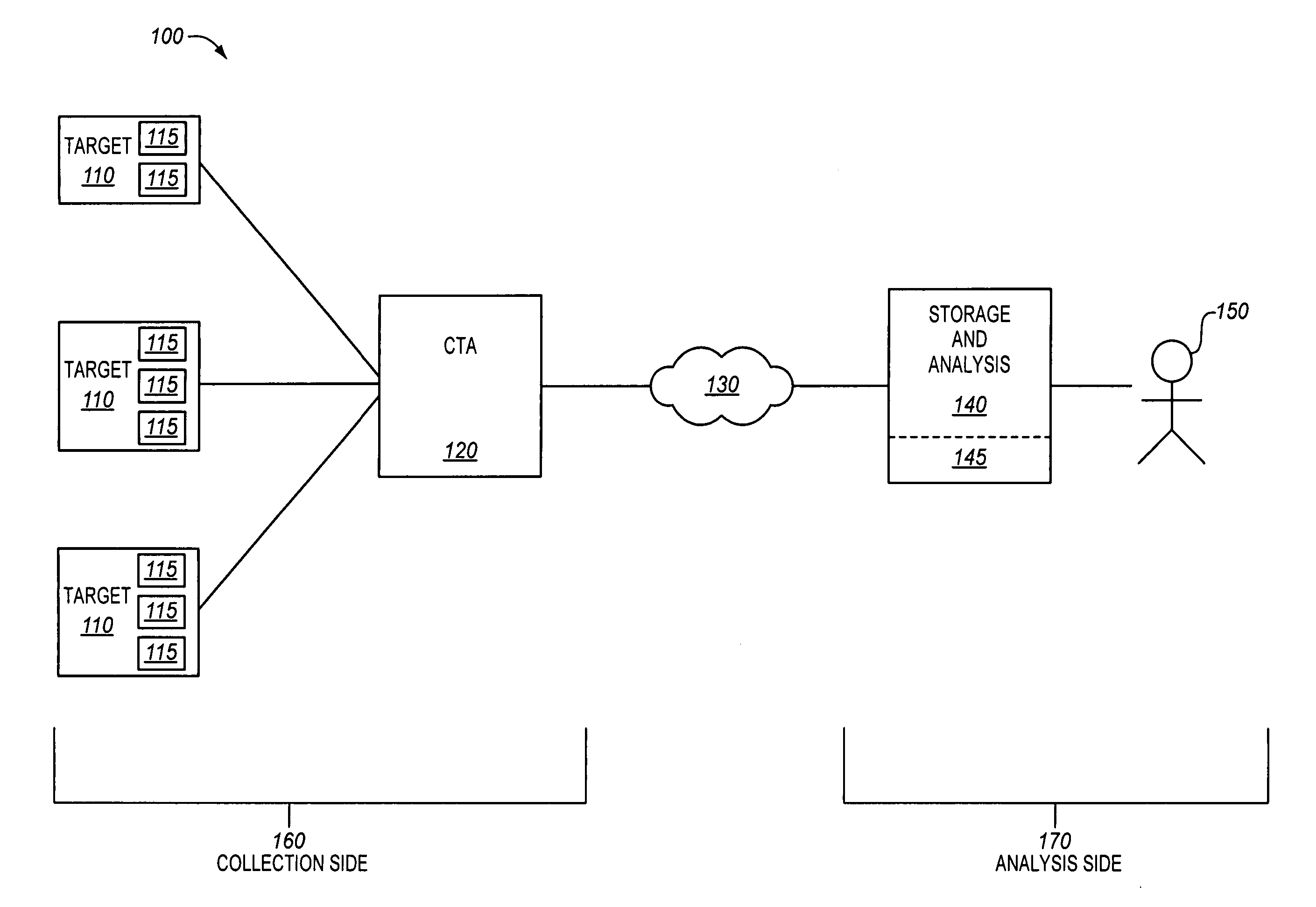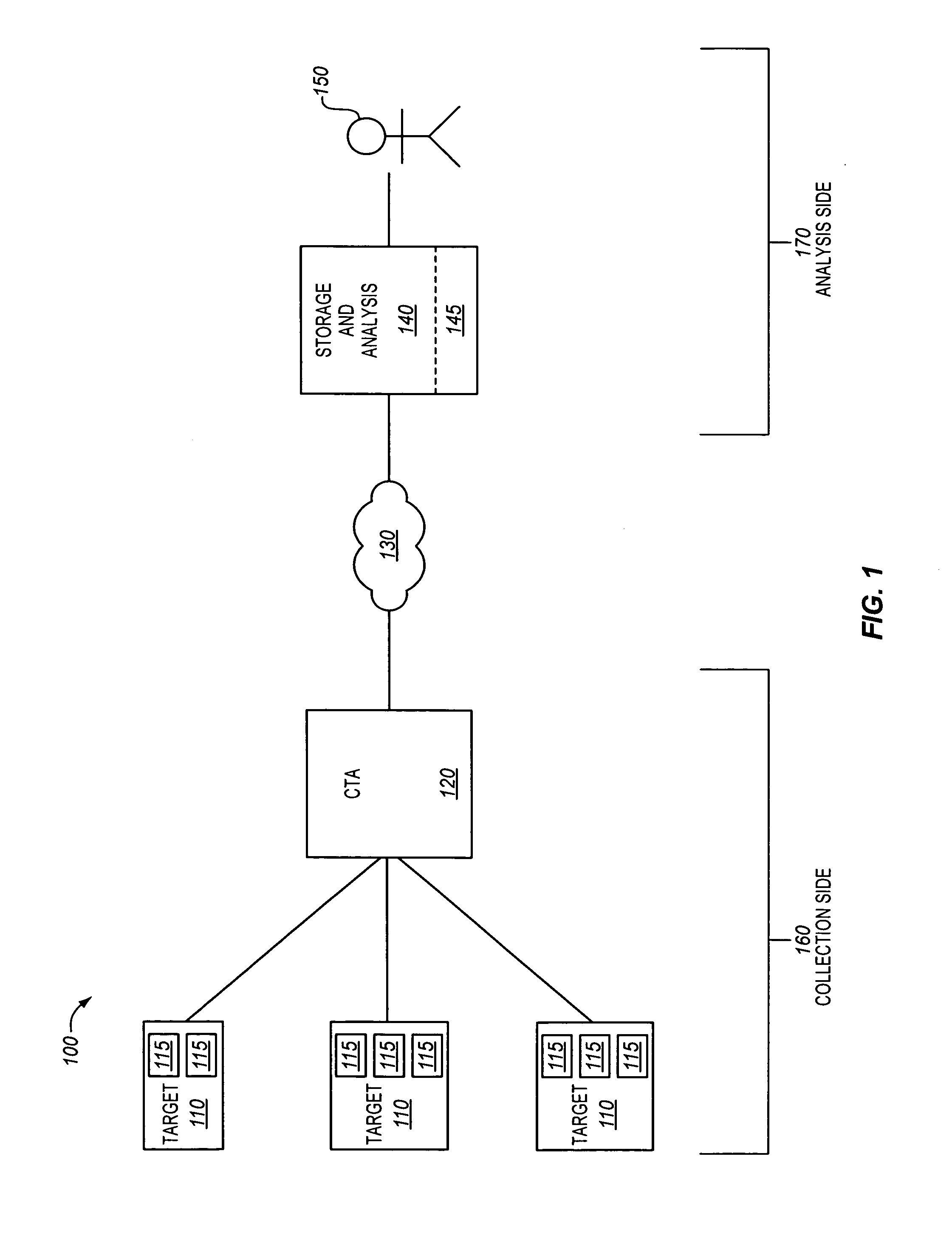High-efficiency time-series archival system for telemetry signals
a time-series archival and telemetry technology, applied in the field of telemetry signal collection, can solve the problems of large amount of storage that may not be reasonable or realistic, uninteresting variation level, and inability to store each sample from all telemetry signals across all monitored machines. achieve the effect of high-efficiency time-series archiving
- Summary
- Abstract
- Description
- Claims
- Application Information
AI Technical Summary
Benefits of technology
Problems solved by technology
Method used
Image
Examples
Embodiment Construction
[0018] A method and apparatus are described for high-efficiency time-series archiving for telemetry signals. According to one embodiment, the method includes selecting one or more telemetry signals of a plurality of telemetry signals by a sequential probability ratio test (SPRT) algorithm, the SPRT algorithm identifying the one or more telemetry signals as not consistent with normal behavior of the plurality of telemetry signals, injecting synthetic samples around the selected one or more telemetry signals to create a continuous time series telemetry sample, and analyzing the continuous time series telemetry sample to identify leading indicators of faults in the target.
[0019] In the following description, numerous details are set forth. It will be apparent, however, to one skilled in the art that embodiments of the present invention may be practiced without these specific details. In other instances, well-known structures, devices, and techniques have not been shown in detail, in o...
PUM
 Login to View More
Login to View More Abstract
Description
Claims
Application Information
 Login to View More
Login to View More - R&D
- Intellectual Property
- Life Sciences
- Materials
- Tech Scout
- Unparalleled Data Quality
- Higher Quality Content
- 60% Fewer Hallucinations
Browse by: Latest US Patents, China's latest patents, Technical Efficacy Thesaurus, Application Domain, Technology Topic, Popular Technical Reports.
© 2025 PatSnap. All rights reserved.Legal|Privacy policy|Modern Slavery Act Transparency Statement|Sitemap|About US| Contact US: help@patsnap.com



